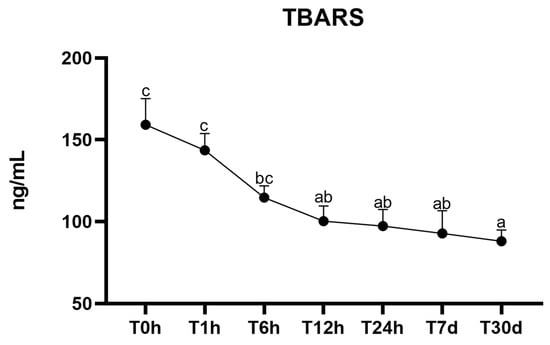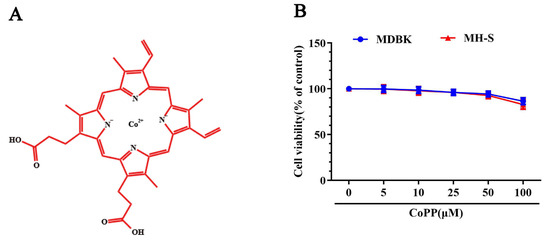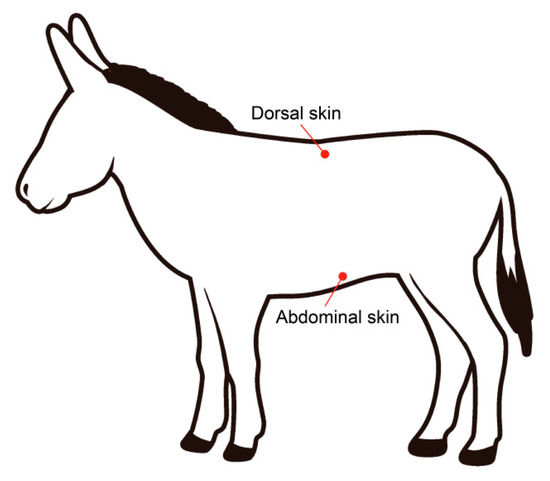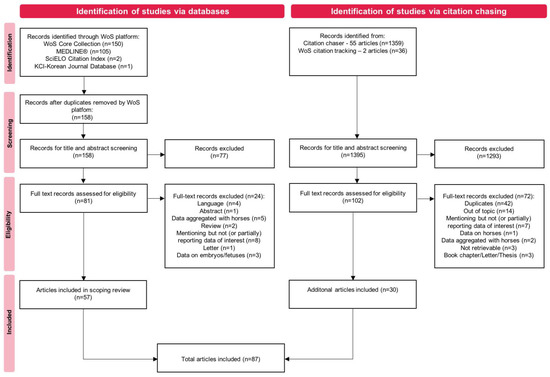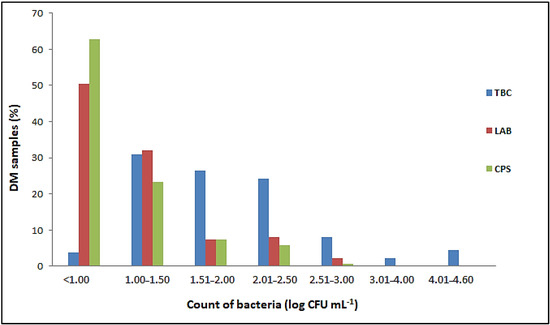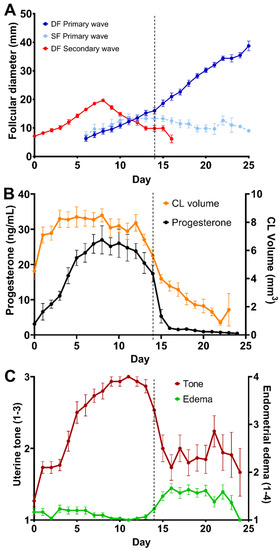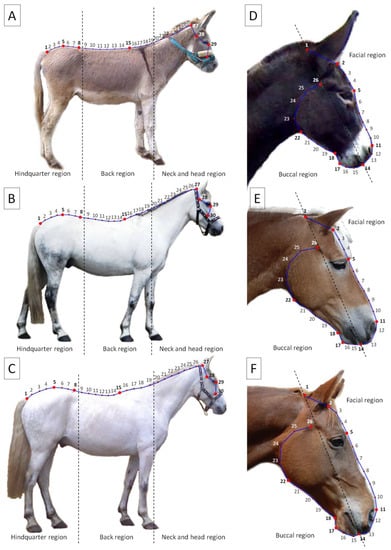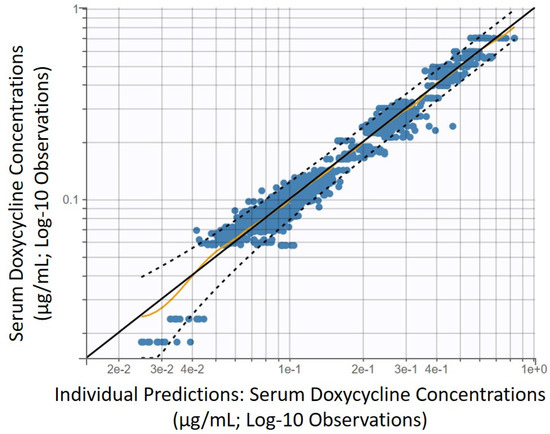Research Advances in Donkey and Mule Science and Medicine
A topical collection in Animals (ISSN 2076-2615). This collection belongs to the section "Equids".
Viewed by 28390
Share This Topical Collection
Editor
Topical Collection Information
Dear Colleagues,
The following collection dedicated to Donkey and Mule Medicine and Research showcases the latest scientific studies and brings to light these once forgotten equines. An increase in the use of donkeys as production animals, continued use as a beast of burden, and a growing industry to keep both donkeys and mules as companion and performance animals has driven the need for better understanding the physiology behind them. This collection includes a vast area of top researchers from around the globe who have reported on new findings focused on improved understanding of basic physiology, behavior, pain, internal medicine, pathogen frequency, and subjects related to their overall wellbeing (e.g., nutrition, pharmacokinetics, dentistry, and hoof care) have all been considered areas of interest for preserving and maintaining donkey and mule populations.
The aim of the present Collection is to gather in one publication the most recent advances in donkey and mule research and welcome the contribution of research papers and literature reviews.
Dr. Amy McLean
Collection Editor
Manuscript Submission Information
Manuscripts should be submitted online at www.mdpi.com by registering and logging in to this website. Once you are registered, click here to go to the submission form. Manuscripts can be submitted until the deadline. All submissions that pass pre-check are peer-reviewed. Accepted papers will be published continuously in the journal (as soon as accepted) and will be listed together on the collection website. Research articles, review articles as well as short communications are invited. For planned papers, a title and short abstract (about 100 words) can be sent to the Editorial Office for announcement on this website.
Submitted manuscripts should not have been published previously, nor be under consideration for publication elsewhere (except conference proceedings papers). All manuscripts are thoroughly refereed through a single-blind peer-review process. A guide for authors and other relevant information for submission of manuscripts is available on the Instructions for Authors page. Animals is an international peer-reviewed open access semimonthly journal published by MDPI.
Please visit the Instructions for Authors page before submitting a manuscript.
The Article Processing Charge (APC) for publication in this open access journal is 2400 CHF (Swiss Francs).
Submitted papers should be well formatted and use good English. Authors may use MDPI's
English editing service prior to publication or during author revisions.
Keywords
- donkeys
- mules
- hinnies
- reproduction
- pain
- pathogens
- nutrition
- genetics
- medication
- physiology
Published Papers (11 papers)
Open AccessArticle
Comparative Assessment of Oxidative and Antioxidant Parameters in Mule and Horse Neonates during Their First Month of Extrauterine Adaptation
by
Amanda Vallone Riccio, Barbara Kolecha Costa, Maria Augusta Alonso, Fernanda Jordão Affonso, Danilo Souza França, Marcilio Nichi, Carla Bargi Belli, Amy Katherine McLean, Yatta Linhares Boakari and Claudia Barbosa Fernandes
Viewed by 695
Abstract
After parturition, a rapid transition occurs from the intrauterine to the extrauterine milieu, exposing neonates to physiological circumstances characterized by oxidative conditions that instigate the generation of reactive oxygen species. These free radicals play pivotal roles in physiological processes; however, an imbalance between
[...] Read more.
After parturition, a rapid transition occurs from the intrauterine to the extrauterine milieu, exposing neonates to physiological circumstances characterized by oxidative conditions that instigate the generation of reactive oxygen species. These free radicals play pivotal roles in physiological processes; however, an imbalance between their production and the removal of antioxidants can result in severe cellular damage. The main objective of this study was to compare the oxidative and antioxidant profiles in mule and horse neonates immediately post-parturition, as well as at subsequent time points (1, 6, 12, and 24 h, 7 and 30 days) during their extrauterine existence. The parameters assessed included the systemic concentrations of Thiobarbituric Acid Reactive Substances (TBARS) and carbonyl groups; the activities of the antioxidants superoxide dismutase (SOD) and glutathione peroxidase (GPx); and the levels of the total, indirect, and direct bilirubin. Our results showed no interaction effect between the neonatal groups and the assessed time points for the variables under investigation. Notably, the concentrations of TBARS, as a marker of lipid peroxidation, and bilirubin were consistently lower in the mules, whereas the glutathione peroxidase (GPx) activity exhibited higher levels in this group. The bilirubin levels were notably reduced in the mule neonates. The TBARS demonstrated a progressive decrease over the observation period in both groups, while the GPx activity remained relatively stable from birth to 7 days, with a substantial increase evident at the 30-day mark. Protein oxidation was not affected by the group and time, while for the SOD values, all times were statistically similar, except for the lower activity at T1h. Consequently, our findings lead us to the conclusion that neonatal mules and horses manifest distinct patterns of oxidative activity and antioxidant capacity during the initial month of their extrauterine existence, potentially indicative of different adaptation mechanisms to the extrauterine environment.
Full article
►▼
Show Figures
Open AccessArticle
Evaluation of Testicular Volume and Correlation with Sperm Production in Martina Franca Donkeys: A Parameter to Consider When Approving Breeding Jacks
by
Roberta Bucci, Ippolito De Amicis, Salvatore Parrillo, Domenico Robbe and Augusto Carluccio
Viewed by 744
Abstract
Good sperm production is a notable requirement for subjects intended for reproduction, particularly in endangered species, and it has been demonstrated that in horse stallions, this is correlated to testicular volume. The present study, which involved Martina Franca jacks, aimed to determine whether,
[...] Read more.
Good sperm production is a notable requirement for subjects intended for reproduction, particularly in endangered species, and it has been demonstrated that in horse stallions, this is correlated to testicular volume. The present study, which involved Martina Franca jacks, aimed to determine whether, also in this endangered breed, there is a correlation between the total sperm number (TSN) and testicular volume. Testes were measured with both ultrasound and a caliper. Testicular volume was calculated using two different formulas: one representing the volume of an ellipsoid and one developed to describe round-shaped testicles. The average sperm concentration was 380.14 ± 254.58 × 10
6/mL, while the average TSN was 16.34 ± 7.76 × 10
9. Our findings evidenced a significant correlation (r > 0.75;
p < 0.05) only between sperm production and the volume calculated with the formula V (cm
3) = 33.57 × H − 56.57 for round-shaped testes. Moreover, significance was evidenced only for data obtained with ultrasound (VTs-us 315.03 ± 25.83 cm
3) but not with caliper. In conclusion, testicular volume can be suggestive of good fertility in Martina Franca jacks; thus, this parameter could be considered when selecting breeding animals.
Full article
►▼
Show Figures
Open AccessArticle
Cobalt Protoporphyrin Blocks EqHV-8 Infection via IFN-α/β Production
by
Liangliang Li, Xinyao Hu, Shuwen Li, Ying Li, Shengmiao Zhao, Fengzhen Shen, Changfa Wang, Yubao Li and Tongtong Wang
Cited by 1 | Viewed by 901
Abstract
Equid alphaherpesvirus type 8 (EqHV-8) is the causative agent of severe respiratory disease, abortions, and neurological syndromes in equines and has resulted in huge economic losses to the donkey industry. Currently, there exist no therapeutic molecules for controlling EqHV-8 infection. We evaluated the
[...] Read more.
Equid alphaherpesvirus type 8 (EqHV-8) is the causative agent of severe respiratory disease, abortions, and neurological syndromes in equines and has resulted in huge economic losses to the donkey industry. Currently, there exist no therapeutic molecules for controlling EqHV-8 infection. We evaluated the potential antiviral activity of cobalt protoporphyrin (CoPP) against EqHV-8 infection. Our results demonstrated that CoPP inhibited EqHV-8 infection in susceptible cells and mouse models. Furthermore, CoPP blocked the replication of EqHV-8 via HO-1 (heme oxygenase-1) mediated type I interferon (IFN) response. In conclusion, our data suggested that CoPP could serve as a novel potential molecule to develop an effective therapeutic strategy for EqHV-8 prevention and control.
Full article
►▼
Show Figures
Open AccessArticle
Dynamic Distribution of Skin Microorganisms in Donkeys at Different Ages and Various Sites of the Body
by
Qingshan Ma, Yunshuang Yue, Xiyan Kou, Wanting Hou, Mingyu Wang, Xihao Yang, Guiqin Liu, Yan Li and Changfa Wang
Viewed by 1461
Abstract
Considerable evidence suggests that the skin microbiota is not only important and complex in humans and other mammals but also critical for maintaining health and skin homeostasis. To date, studies on the skin microorganisms of donkeys are surprisingly rare. To investigate the dynamic
[...] Read more.
Considerable evidence suggests that the skin microbiota is not only important and complex in humans and other mammals but also critical for maintaining health and skin homeostasis. To date, studies on the skin microorganisms of donkeys are surprisingly rare. To investigate the dynamic changes in commensal microbial communities on the skins of healthy donkeys throughout the growing period, skin and soil samples were collected from 30 healthy Dezhou donkeys (ranging from 1, 6, 12, 24 to 48 months of age) and their corresponding breeding sheds on the farm. All samples were analysed for high-throughput sequencing of the 16S rRNA and ITS to characterize the skin microbiota of healthy donkeys and compare the differences in skin microbiota among donkeys of different ages. There were notable differences in the proportions of various genera (including bacteria and fungi) between dorsal and abdominal skin with increasing age. The comparison of the skin microbial communities among these groups revealed that
Staphylococcus was mainly enriched in the early growing stage (1 and 6 months), while the relative abundance of
Streptococcus was higher in both the 1- and 48-month-old age groups. Moreover, some bacteria and commensal fungi, such as
Staphylococcus and
Trichosporon, were found to be positively correlated between the skin and the environment. This is the first study to investigate the dynamic changes in skin microbiota diversity and composition in donkeys of different ages and at different sites of the body. Furthermore, this study provides insights into the dynamic alterations in skin microbes during a donkey’s growth and characterizes the profiles of bacterial and fungal communities across a donkey’s body regions (dorsal and abdomen).
Full article
►▼
Show Figures
Open AccessArticle
Interspecific and Intraspecific Artificial Insemination in Domestic Equids
by
Diana Fanelli, Rebecca Moroni, Carlotta Bocci, Francesco Camillo, Alessandra Rota and Duccio Panzani
Cited by 1 | Viewed by 1634
Abstract
Horses and donkeys differ phenotypically and karyotypically, although they can interbreed freely. Eight Standardbred mares and nine Amiata donkey jennies were included in the study. Semen was collected from two horses and two donkey stallions of proven fertility. A first pregnancy diagnosis was
[...] Read more.
Horses and donkeys differ phenotypically and karyotypically, although they can interbreed freely. Eight Standardbred mares and nine Amiata donkey jennies were included in the study. Semen was collected from two horses and two donkey stallions of proven fertility. A first pregnancy diagnosis was performed on day 10 after ovulation and repeated every day until embryo detection or until day 16. Irrespectively of the sire species, pregnancy rates in horse females (20/30, 66.7%) were significantly higher than in donkey females (19/70, 27.1%) (
p < 0.05), while horse and donkey males did not affect pregnancy rates. Comparing overall intraspecific and interspecific AI, pregnancy rates were 25/37 (67.6%) and 14/63 (22.2%), respectively (
p = 0.0001). The lowest pregnancy rate was obtained when inseminating jennies with horse stallion semen (8/49, 16.3%). No statistical differences were found when comparing embryo diameters, day at first pregnancy diagnosis, or in vitro embryo morphological quality among groups. In this study, much poorer results were obtained with jennies than with mares. Interspecific AI resulted in lower pregnancy rates than intraspecific Al, and AI to produce hinny hybrids resulted in the lowest pregnancy rate. Further studies are required to better understand the mechanism involved in such different outcomes in relation to intra- and interspecific breeding in domestic equids.
Full article
►▼
Show Figures
Open AccessReview
Donkey Heart Rate and Heart Rate Variability: A Scoping Review
by
Marta De Santis, Samanta Seganfreddo, Alberto Greco, Simona Normando, Daniele Benedetti, Franco Mutinelli and Laura Contalbrigo
Cited by 2 | Viewed by 2371
Abstract
Heart rate (HR) and heart rate variability (HRV) are commonly used physiological measures in animals. While several studies exist on horse HRV, less information is available for donkeys. This scoping review aims to understand the extent and type of published evidence on donkey
[...] Read more.
Heart rate (HR) and heart rate variability (HRV) are commonly used physiological measures in animals. While several studies exist on horse HRV, less information is available for donkeys. This scoping review aims to understand the extent and type of published evidence on donkey HR and HRV, their clinical and research applications, the devices used, and the analysis performed. Only quantitative primary studies published in English were considered. Four different databases were queried through the Web of Science platform, with additional evidence identified by citation chasing. After a two-stage screening phase, data were extracted considering study and population characteristics, information on HR/HRV analysis, and applications. The majority of the 87 included articles (about 80%) concerned a sample size of up to 20 individuals and were published since 2011 (about 65%). Forty-one articles employed an electronic device for signal acquisition (mainly electrocardiographs and heart rate monitors), yet only two articles reported HRV parameters. The literature on donkey HRV is lacking, and this gap can be filled by gaining knowledge on donkey characteristics and finding useful tools for welfare assessment. Comparison with what is known about the horse allows a discussion of the technical and interpretative difficulties that can be encountered with donkeys.
Full article
►▼
Show Figures
Open AccessArticle
Microbiological Quality of Raw Donkey Milk from Serbia and Its Antibacterial Properties at Pre-Cooling Temperature
by
Ljubiša Šarić, Tamara Premović, Bojana Šarić, Ivana Čabarkapa, Olja Todorić, Jelena Miljanić, Jasmina Lazarević and Nedjeljko Karabasil
Cited by 1 | Viewed by 1664
Abstract
The aim of this study was to examine the microbiological quality of raw donkey milk of an indigenous Serbian breed as well as the changes in the microbial populations during storage at 4 °C. In addition, antibacterial activity of donkey milk against
E.
[...] Read more.
The aim of this study was to examine the microbiological quality of raw donkey milk of an indigenous Serbian breed as well as the changes in the microbial populations during storage at 4 °C. In addition, antibacterial activity of donkey milk against
E. coli,
L. monocytogenes and
S. aureus at 15 °C as well as the content of the two main antibacterial proteins lysozyme and lactoferrin were investigated. Microbiological examination of 137 individual milk samples collected over a period of 21 months showed good microbiological quality since foodborne pathogens such as
Salmonella spp. and
L. monocytogenes were not detected in any of the analyzed samples, while the number of
E. coli, Enterobacteriaceae, total coliform bacteria, sulfite-reducing Clostridia and aerobic sporogenic bacteria was below the limit of quantification (<1 cfu mL
−1). During the six-days storage at 4 °C, total bacterial counts and the counts of lactic acid bacteria remained at the initial level while pathogenic bacteria were not detected. The strongest antibacterial activity of the tested milk was observed against
E. coli, while
S. aureus was the least sensitive to milk antibacterial compounds. Although further research is needed to fully elucidate the antibacterial mechanism and synergistic activity of different compounds in donkey milk, the high content lysozyme (2.63 ± 0.03 g L
−1) and lactoferrin (15.48 mg L
−1) observed in tested milk could contribute to its strong antibacterial activity and extension of the storage period during which it can be safely consumed.
Full article
►▼
Show Figures
Open AccessArticle
Structural and Functional Dynamics of the Ovary and Uterus during the Estrous Cycle in Donkeys in the Eastern Caribbean
by
Lorenzo G. T. M. Segabinazzi, Robert O. Gilbert, Rachael L. Ambrosia, Don R. Bergfelt, Juan C. Samper, Erik W. Peterson and Hilari M. French
Viewed by 1374
Abstract
Eight non-bred, non-pregnant, regularly cycling Caribbean jennies were examined daily via transrectal ultrasound to define the ovarian and uterine dynamics during four consecutive estrous cycles. Blood samples were collected every other day for progesterone analysis. The mean (±SD) overall inter-ovulatory interval across all
[...] Read more.
Eight non-bred, non-pregnant, regularly cycling Caribbean jennies were examined daily via transrectal ultrasound to define the ovarian and uterine dynamics during four consecutive estrous cycles. Blood samples were collected every other day for progesterone analysis. The mean (±SD) overall inter-ovulatory interval across all donkeys and cycles was 22.93 ± 1.99 days. The maximum follicular diameter was 34.6 ± 2.9 mm. A two-wave pattern was evident in 97% (30/31) of the cycles. The emergence of the future dominant follicle and the largest subordinate follicle of the major primary wave coincided on Day 5.7 ± 3.6 post-ovulation, whereas the secondary wave emerged on Day 19.8 ± 2.9 during estrus of the previous cycle or early diestrus. The secondary wave was often minor (93%, 28/30 cycles). Follicular deviation occurred 8.2 ± 1.4 days before the subsequent ovulation. Luteal volume increased for the first four days after ovulation and reached a maximum volume of 8.5 ± 2.7 mm
3 at Day 5.4 ± 0.4, before gradually regressing after Day 15. Serum progesterone concentration increased from Day 1 after ovulation, peaking at 27.0 ± 9.6 ng/mL between 7 and 10 days after ovulation. Progesterone concentration dropped precipitously around Day 15 after ovulation and was below 2 ng/mL around Day 17 ± 2. A day effect (
p < 0.0001) was observed for corpus luteum’s volume, progesterone concentration, and uterine tone, but not for endometrial edema (
p > 0.05). This study helps to clarify and define normal estrous characteristics of jennies in the Eastern Caribbean.
Full article
►▼
Show Figures
Open AccessArticle
Evaluation of Ultrasound Measurement of Subcutaneous Fat Thickness in Dairy Jennies during the Periparturient Period
by
Irene Nocera, Francesca Bonelli, Luca Turini, Alessio Madrigali, Benedetta Aliboni and Micaela Sgorbini
Viewed by 1366
Abstract
The body condition score (BCS) represents a practical but subjective method for assessing body fat reserves. Real time ultrasonography (RTU) has been proposed as an accurate method to objectively measure subcutaneous fat (SF) thickness and predict body fat reserves in cows, horses and
[...] Read more.
The body condition score (BCS) represents a practical but subjective method for assessing body fat reserves. Real time ultrasonography (RTU) has been proposed as an accurate method to objectively measure subcutaneous fat (SF) thickness and predict body fat reserves in cows, horses and donkeys. The aim of the present study was to describe RTU measures of SF thickness during periparturient period in jennies. The present prospective cohort study evaluated six dairy jennies. SF RTU were performed at 15 and 7 days before the presumptive delivery, and 2, 15 and 30 days after delivery. A portable ultrasound machine and multifrequency linear transducer (5–7.5 MHz) was used. RTU images were obtained in six sites (S1–S6). Results at each time point were reported as mean ± standard deviation and compared through time. A total of 180 images were evaluated. RTU technique was easy to perform and well tolerated. No statistically significant differences were found of each site during time, except for S2 and S6a: S2 at T2 and S6a at T1 were significatively different to values obtained at T5. The RTU mean values were above those reported by others, suggesting major physio-logical challenges related to energy balance and fat mobilization in pregnant jennies bred for milking production. BCS and sites through observational time have shown a good and reliable association. Our study could give preliminary indications on fat reserves in different body locations evaluated thanks to RTU and it show no significative variation of SF thickness, in pregnant and lactating jennies.
Full article
►▼
Show Figures
Open AccessArticle
Comparison of Donkey, Pony, and Horse Dorsal Profiles and Head Shapes Using Geometric Morphometrics
by
Małgorzata Maśko, Małgorzata Wierzbicka, Łukasz Zdrojkowski, Tomasz Jasiński, Urszula Sikorska, Bartosz Pawliński and Małgorzata Domino
Cited by 8 | Viewed by 8677
Abstract
Since donkey breeding has increased due to their variety of uses, welfare evaluation has become more important. This study aimed to compare donkey, pony, and horse dorsal profiles and head shapes using geometric morphometrics (GM). Photographs of 14 donkeys, 14 ponies, and 14
[...] Read more.
Since donkey breeding has increased due to their variety of uses, welfare evaluation has become more important. This study aimed to compare donkey, pony, and horse dorsal profiles and head shapes using geometric morphometrics (GM). Photographs of 14 donkeys, 14 ponies, and 14 horses were analyzed using GM, including the sliding semilandmarks method. The variations in the first three principal components (PCs) were PC1: 57.16%, PC2: 16.05%, and PC3: 8.31% for the dorsal profiles and PC1: 44.77%, PC2: 13.46%, and PC3: 7.66% for the head shapes. Both the dorsal profiles and head shapes differed between donkeys and horses (
p < 0.0001) but not between donkeys and ponies (
p > 0.05). Moreover, both the dorsal profiles and head shapes differed in size between ponies and horses (
p < 0.0001) but not in shape (
p > 0.05). Higher Mahalanobis and Procrustes distances were noted between donkeys and horses as well between donkeys and ponies than between ponies and horses. The use of geometric morphometrics revealed the differences in the dorsal profiles and head shapes between the studied equids. These differences should be taken into account when adapting welfare scales and methods from horses to donkeys.
Full article
►▼
Show Figures
Open AccessArticle
Nonlinear Mixed-Effect Pharmacokinetic Modeling and Distribution of Doxycycline in Healthy Female Donkeys after Multiple Intragastric Dosing–Preliminary Investigation
by
Ronan J. J. Chapuis, Joe S. Smith, Hilari M. French, Felix Ngosa Toka, Erik W. Peterson and Erika L. Little
Cited by 2 | Viewed by 4561
Abstract
Doxycycline (DXC) is a broad-spectrum antibacterial antimicrobial administered to horses for the treatment of bacterial infections which may also affect donkeys. Donkeys have a different metabolism than horses, leading to differences in the pharmacokinetics of drugs compared to horses. This study aimed to
[...] Read more.
Doxycycline (DXC) is a broad-spectrum antibacterial antimicrobial administered to horses for the treatment of bacterial infections which may also affect donkeys. Donkeys have a different metabolism than horses, leading to differences in the pharmacokinetics of drugs compared to horses. This study aimed to describe the population pharmacokinetics of DXC in donkeys. Five doses of DXC hyclate (10 mg/kg) were administered via a nasogastric tube, q12 h, to eight non-fasted, healthy, adult jennies. Serum, urine, synovial fluid and endometrium were collected for 72 h following the first administration. Doxycycline concentration was measured by competitive enzyme immunoassay. Serum concentrations versus time data were fitted simultaneously using the stochastic approximation expectation-maximization algorithm for nonlinear mixed effects. A one-compartment model with linear elimination and first-order absorption after intragastric administration, best described the available pharmacokinetic data. Final parameter estimates indicate that DXC has a high volume of distribution (108 L/kg) as well as high absorption (10.3 h
−1) in donkeys. However, results suggest that oral DXC at 10 mg/kg q12 h in donkeys would not result in a therapeutic concentration in serum, urine, synovial fluid or endometrium by comparison to the minimum inhibitory concentration of common equine pathogens. Further studies are recommended to identify appropriate dosage and dosing intervals of oral DXC in donkeys.
Full article
►▼
Show Figures






